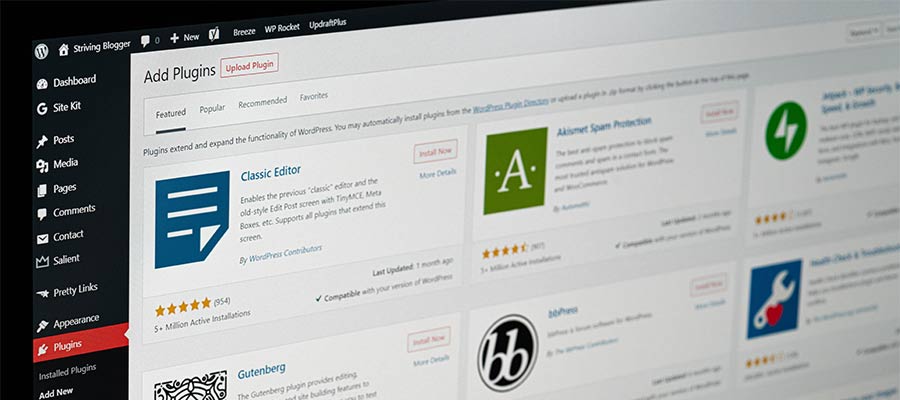Web design makes for a very flexible career path. Like virtually every other line of work, you can use your skills to land a job at an established company. But you can also start your freelance venture or a small agency in short order.
If you do choose the latter, you’ll certainly face some challenges. Bringing in clients, establishing a good reputation, and building a portfolio all take time and effort. However, it’s also a relatively cheap type of business to start up and manage.
That being said, it’s still important to weigh the pros and cons of the products and services you buy. Each extra cost, while potentially tax-deductible, is also a direct hit on your wallet.
Today, we’ll take a look at some typical items that web designers might be tempted to spend their hard-earned money on. With each one, we’ll also provide you with some guidance that you can use to determine whether or not they’re worth your cash.
Web Hosting
If you’ve ever shopped around for web hosting, you likely know that it spans quite a wide range of pricing. Everything from a few dollars a month up to hundreds or thousands, depending on the level of service.
Hosting is important enough, however, that it shouldn’t be skimped on. That’s true whether or not you decide to resell space to your clients. A shoddy hosting service reflects poorly on you. If your site loads slowly, or not at all, potential customers won’t have the patience to wait for a fix. They’ll simply move on to the next option.
What’s most important is the available resources (storage space, memory, processing power, etc.), the level of support, and stability. This requires some technical research and also some thought about your potential for growth down the road.
This doesn’t mean that you have to spring for the most expensive services out there. But it does mean you should avoid the bargain basement packages. In most cases, a moderately-priced package from a reputable company is all you need.
The bottom line is that solid hosting is always a good investment, but there’s no need to overpay.

CMS Plugins
Have you ever seen a plugin for your favorite CMS, such as WordPress, that does something amazing? Or have you tried a free version of a plugin only to discover that you want the extra features that come with the “Pro” version?
It’s a common situation and also a very tempting one for web designers. Most commercial plugins aren’t prohibitively expensive, and the right ones can enhance your projects.
But are they worth the investment? That depends on what they do and how much use you’ll get from them.
In the case of a freelancer or agency, it’s generally a good idea to look for plugins that you’re going to use again and again. General purpose plugins that perform functions such as eCommerce, image galleries, or even page builders are prime examples.
Remember that some plugins are priced depending on the number of websites you plan to use them on. Thus, more sites mean more money. That may make some niche offerings not quite worth the extra cost. In that case, having your clients buy directly from the plugin author is the way to go.

Stock/Design Asset Subscription Services
Web design takes creativity. And being creative is so much easier when you have access to the right design assets. Stock photos, themes, UI elements, and mockups can all serve an important purpose. They help to improve efficiency and provide you (and your clients) with more variety as well.
Speaking of variety, there are a number of both free and commercial subscription services that allow you to download various design elements. But, while it’s great to have so many choices, this also makes for a tough decision.
For some designers, the thought of paying for what they can get for free elsewhere makes little sense. It’s easy to see why, as many of the freebie sites do offer high-quality items.
Yet, they don’t always have the depth of good commercial service – not to mention frequent additions. On the other hand, commercial sites may also make you pay for a bunch of assets you’ll never use.
The decision comes down to budget and (once again) how much you plan to use a particular service. If you tend to work on smaller projects and can get away with the limited variety of a free design asset library, go for it.
However, if you’re working on large, more profitable projects, spending the extra money may make sense. For those who only occasionally find themselves needing something different, a good compromise might be a pay-as-you-go model, as this gives you the best of both worlds.

Social Media Marketing
Remember when social media was supposed to make websites irrelevant? Well, that never happened. Instead, it became a jumbled mess of content – one controlled by algorithms designed to keep us scrolling and make money (for them, that is).
As such, it can be incredibly difficult to get your message out there. In the case of Facebook, you can’t even reach the timelines of everyone who “likes” your business page unless you’re willing to pay for the privilege. Naturally, other networks have followed suit.
The temptation here is that you can promote your posts to a relatively small, highly-targeted group of people for a low price. However, finding success here is not that simple.
While spending $20 to promote something now and then may not seem like a big deal, it can start to add up. And the question becomes: What type of return are you getting?
If you’re after a few more likes or followers, there may be better ways to go about recruiting them (like via a newsletter, for example). Otherwise, paying for followers would seem to be effective only in very unique circumstances.
If the aim is to increase sales, then it’s wise to craft a strategy first. Randomly promoting posts without careful planning and targeting is probably a waste of funds.

It’s Your Money
As a web designer/business owner, there is no shortage of opportunities to spend money. With the incredible array of products and services geared towards our industry, it’s easy to find yourself making lots of purchases.
So, how do you know which ones are worth it? Perhaps the old adage says it best: You have to spend money to make money.
In other words, look for items that will help you increase revenue. It might be a tool that saves you time, a web host that enables you to resell space, or a service that brings you tons of relevant design assets.
On the other hand, if you don’t see a clear financial benefit to something, it probably isn’t worth buying.
The post Is It Worth the Money? Making Wise Investments in Your Design Business appeared first on Speckyboy Design Magazine.
